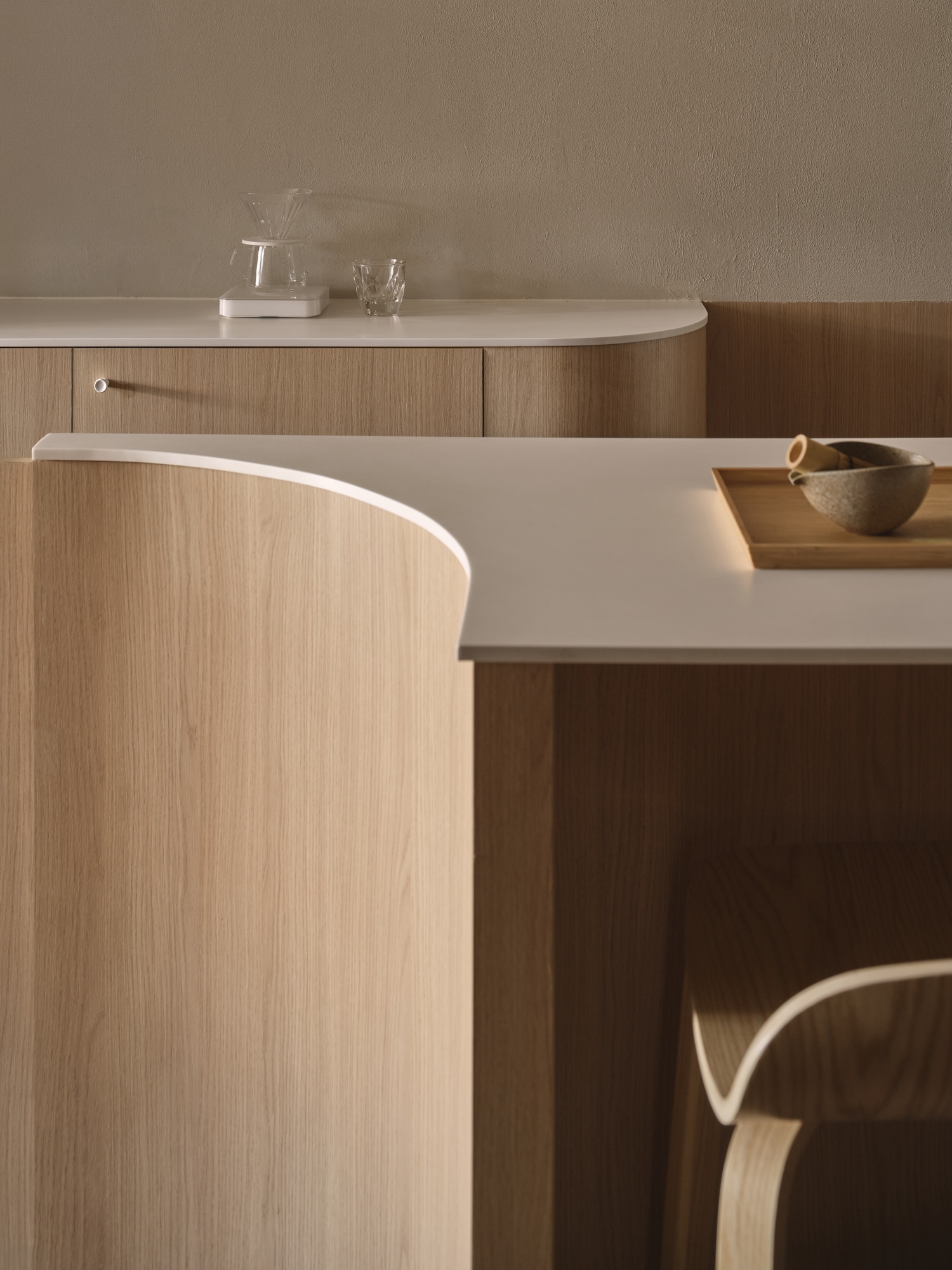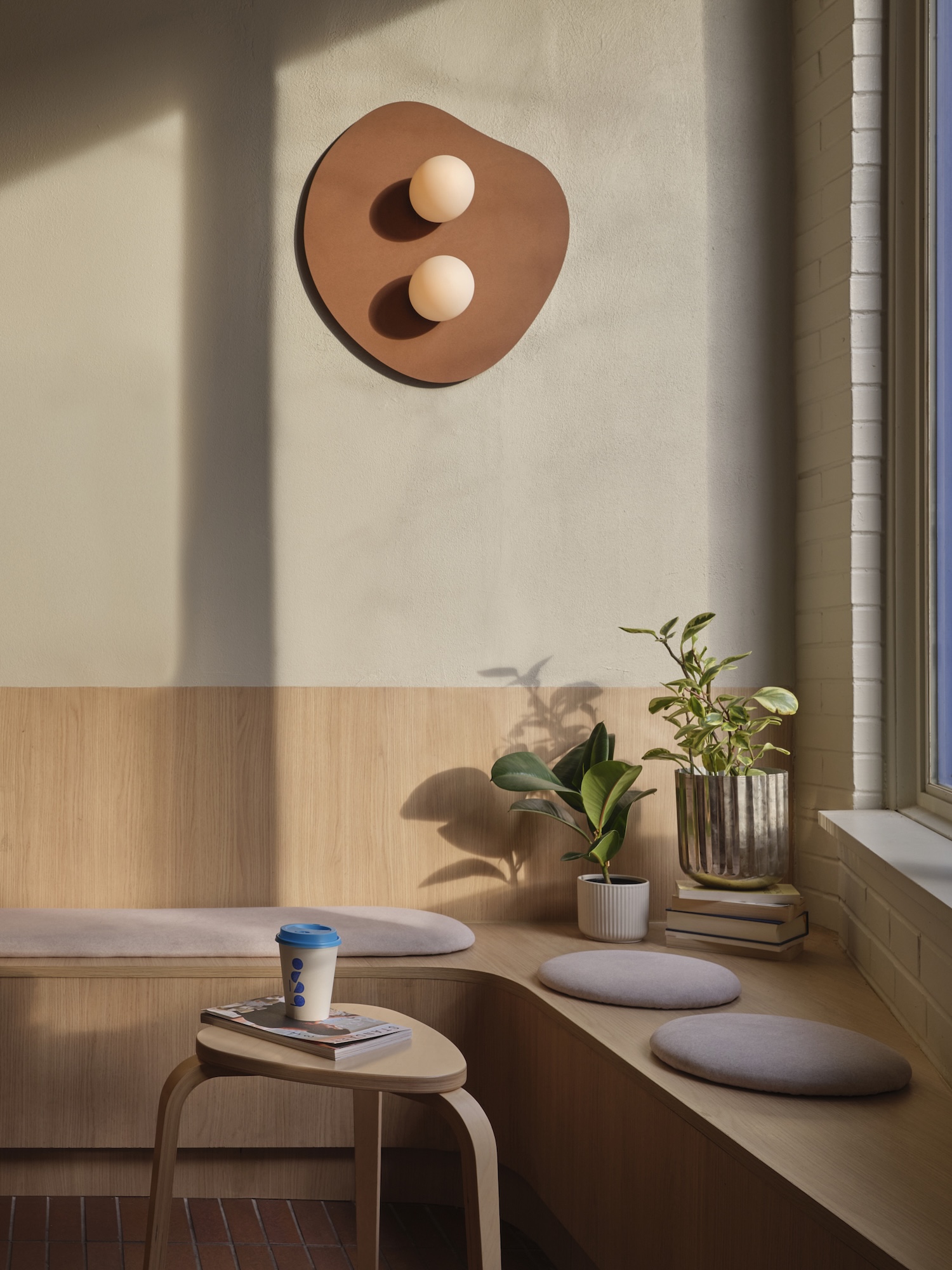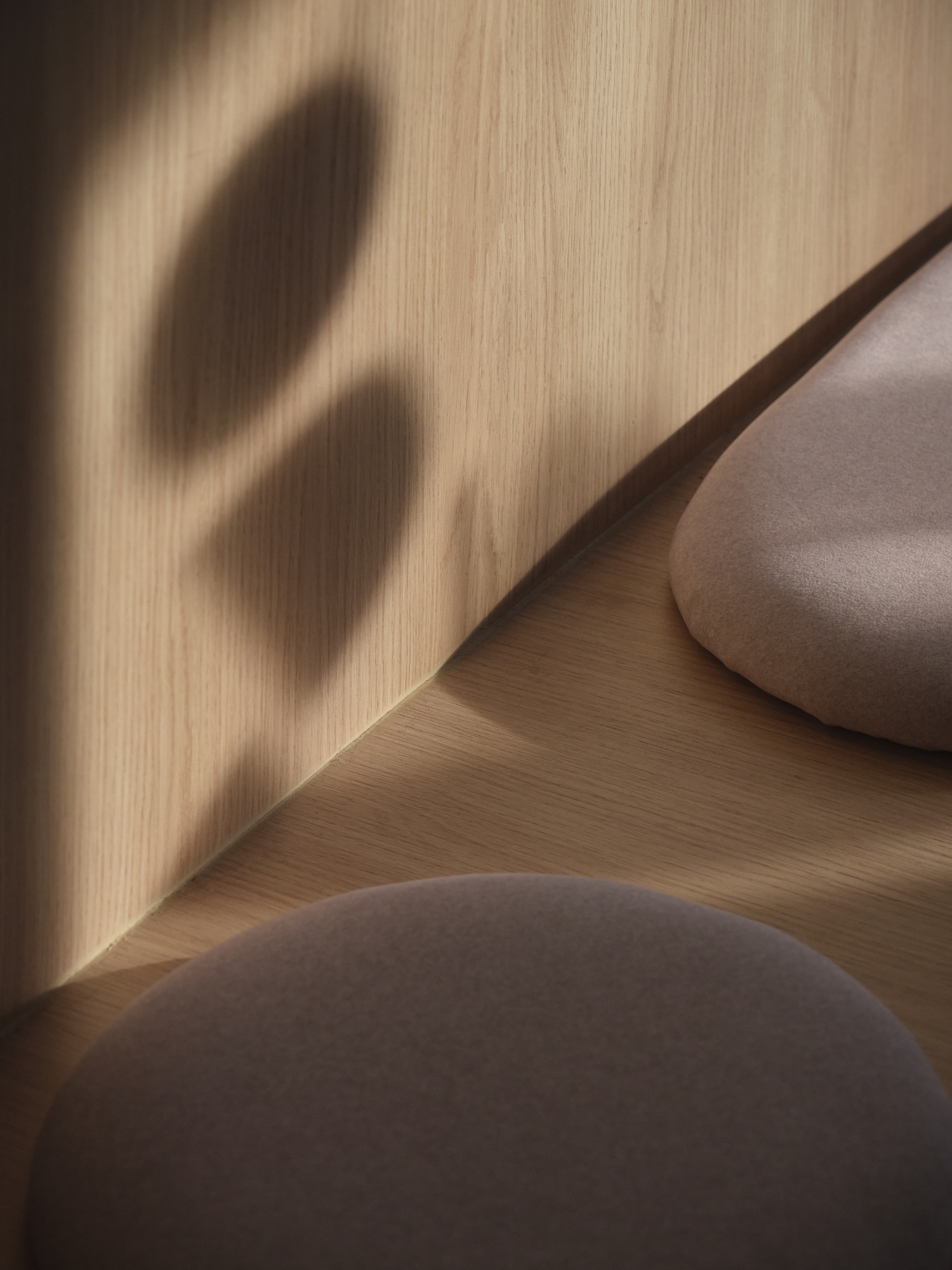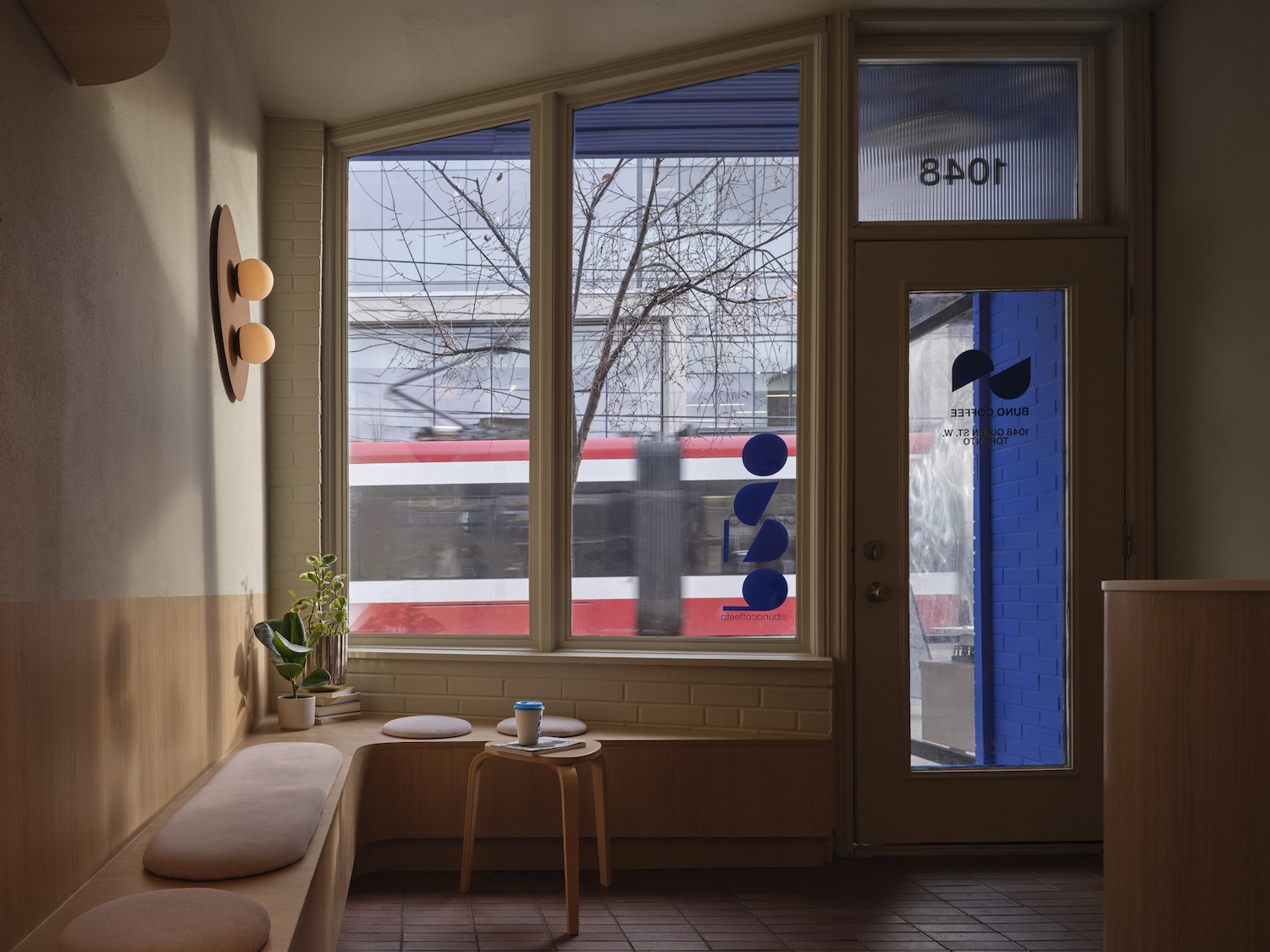Buno is a minimalist coffee shop located in Toronto, Canada, designed by Architecture Riot. The gentle curve that welcomes you into Buno Coffee’s Queen Street West location isn’t just an architectural flourish—it’s a gesture of invitation. As you cross the threshold from the bustling Toronto streetscape, the café reveals itself not as a mere pit stop for caffeine, but as a carefully orchestrated experience where every element has been considered, from the weight of light on brick to the choreography of human movement.
“We wanted to create something that felt simultaneously rooted and ephemeral,” explains Architecture Riot, the firm behind this transformation. “The space needed to honor its heritage while establishing its own quiet presence.”
This tension between permanence and lightness defines the space. The continuous horizontal planes create natural pathways through the café, guiding patrons with a subtlety that feels more intuitive than prescriptive. These flowing lines echo modernist principles but refuse austerity—instead, they’re softened at their edges, humanizing the geometry in a way that recalls the organic forms of Alvar Aalto’s furniture or the nuanced curves in Isamu Noguchi’s tables.
The material palette speaks to this duality. Original brick flooring—carefully preserved and recontextualized—anchors the space in its retail past, while oak millwork introduces warmth and contemporary craft. The plaster walls, with their soft tactility, mediate between these elements, creating surfaces that capture and diffuse light throughout the day. This dialogue between old and new materials represents a thoughtful approach to adaptive reuse—one that acknowledges history without becoming beholden to it.
At the heart of the space stands the service counter, functioning simultaneously as sculptural object and social catalyst. Its placement transforms what could be a transactional exchange into a moment of connection between barista and guest. Suspended above, a pendant light casts a diffused glow that echoes the organic sconces punctuating the walls—each lighting element creating discrete zones of intimacy within the larger whole.
The custom millwork deserves particular attention for its dual nature as both architectural element and functional furnishing. The integrated seating solutions demonstrate how thoughtful design can accommodate both solitary contemplation and social gathering without compromising either. This spatial flexibility embodies Buno’s philosophy of coffee as both personal ritual and communal pleasure.






